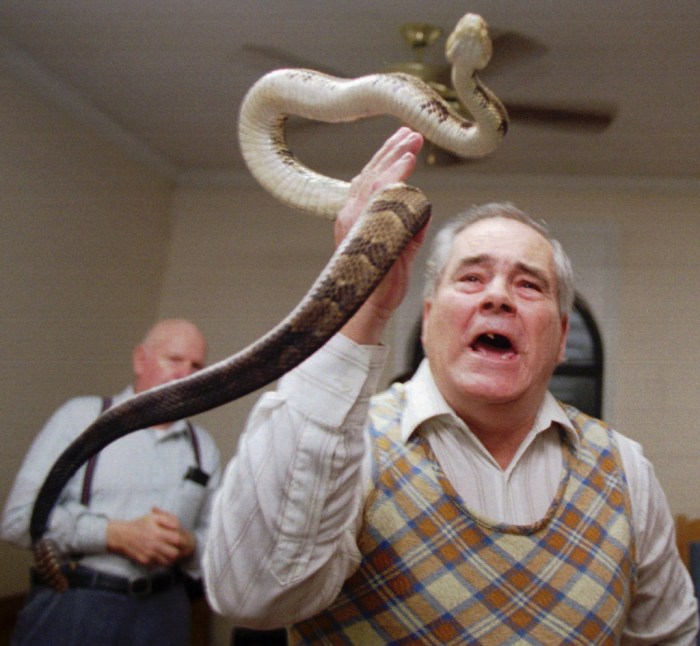
How to handle his snake Yumi Sin and fit kitty is a comprehensive guide that delves into the fascinating world of snakes and their interactions with cats. With a focus on safety, understanding, and responsible care, this guide provides a wealth of information for anyone interested in these intriguing creatures.
From snake handling techniques to cat behavior and snake interactions, this guide covers a wide range of topics to ensure a harmonious coexistence between snakes and cats. By providing detailed instructions and practical tips, this guide empowers readers with the knowledge and skills to handle snakes safely, understand their behavior, and prevent conflicts with cats.
Snake Handling Techniques

Handling a snake requires caution and proper technique to ensure both the snake’s and the handler’s safety. Here are the crucial steps to safely handle a snake:
Proper Grip and Positioning
When handling a snake, always use a firm but gentle grip. Avoid squeezing the snake or applying excessive pressure. Hold the snake securely behind the head, using your thumb and index finger to support its body. Keep the snake’s head slightly elevated and avoid making sudden movements.
Respecting the Snake’s Boundaries
Snakes have sensitive skin and can become stressed easily. When handling a snake, respect its boundaries by avoiding touching its head or tail. Avoid making sudden movements or loud noises that could startle the snake.
Restraining a Snake
If necessary, you may need to restrain a snake for safety reasons. To do this, use a snake hook or a thick towel to gently lift the snake off the ground. Support the snake’s body with one hand while using the hook or towel to guide its head.
Avoid pulling or jerking the snake, as this could cause injury.
Understanding Snake Behavior
Snakes are fascinating creatures with unique behaviors and instincts. Understanding their natural behaviors is crucial for responsible observation and safe interaction.
Feeding Habits
Snakes are carnivores and their feeding habits vary depending on their species. Most snakes are ambush predators, relying on camouflage and stealth to capture their prey. They typically constrict or venomize their prey before swallowing it whole.
Mating Rituals
During mating season, snakes engage in specific rituals to attract potential mates. These rituals may involve pheromone release, courtship dances, and combat between males.
Defensive Mechanisms
Snakes have evolved various defensive mechanisms to protect themselves from predators and threats. These include camouflage, mimicry, and defensive postures. Some snakes may also use venom as a defense mechanism.
Handling your snake yumi sin and fit kitty can be a daunting task, but with the right approach, it can be a rewarding experience. First, it’s important to understand their behavior and natural instincts. By learning how to handle his snake yumi sin and fit kitty, you can create a bond with your pet and ensure their well-being.
For more detailed instructions on how to handle his snake yumi sin and fit kitty, visit this guide .
Interpreting Snake Body Language
Observing a snake’s body language can provide valuable insights into its mood and intentions. A relaxed snake will have a loose, straight body, while a stressed or aggressive snake may coil up tightly and flatten its head.
To handle his snake Yumi Sin and fit kitty, he must maintain a calm demeanor and move slowly. Similar to how insurance agents can increase productivity by prioritizing tasks and utilizing technology, he must prioritize his actions and use the appropriate tools to manage his pets effectively.
Approaching and Interacting with Snakes
When encountering a snake in the wild, it is important to remain calm and avoid unnecessary disturbance. Never attempt to handle a snake unless you have received proper training. If possible, maintain a safe distance and observe the snake from afar.
Snake Venom and First Aid

Snake venom is a complex mixture of proteins, enzymes, and other chemicals that can have a variety of effects on the human body. The severity of the effects depends on the type of snake, the amount of venom injected, and the individual’s response to the venom.There
are four main types of snake venom: neurotoxic, cytotoxic, hemotoxic, and mixed. Neurotoxic venom affects the nervous system, causing paralysis and respiratory failure. Cytotoxic venom damages cells and tissues, causing pain, swelling, and tissue necrosis. Hemotoxic venom damages blood vessels and red blood cells, causing bleeding and anemia.
Mixed venom contains a combination of different types of toxins.Snakebites can be a medical emergency, and it is important to seek medical attention as soon as possible. In the event of a snakebite, the following first aid measures should be taken:
- Remain calm and do not panic.
- Immobilize the bitten limb and keep it below the level of the heart.
- Apply a pressure bandage to the bite site to help slow the spread of venom.
- Clean the wound with soap and water.
- Remove any jewelry or clothing that may constrict the bitten limb.
- Do not cut or suck the wound.
- Do not apply ice or heat to the wound.
- Monitor the victim for signs of shock, such as pale skin, sweating, and rapid breathing.
Snakebite prevention is also important. The following tips can help reduce the risk of being bitten by a snake:
- Wear appropriate clothing and footwear when hiking or working in areas with known snake populations.
- Avoid walking through dense vegetation or tall grass.
- Be aware of your surroundings and watch for snakes.
- Do not handle snakes unless you are trained to do so.
- If you see a snake, do not approach it. Give it plenty of space and allow it to move away.
Cat Behavior and Snake Interactions

Cats possess an innate curiosity and predatory instinct, which can lead them to interact with snakes. Understanding their natural behaviors is crucial for preventing conflicts and ensuring safety.
Introducing a Cat to a Snake
When introducing a cat to a snake, proceed with caution and under strict supervision. Place the snake in a secure enclosure and allow the cat to observe from a distance. Gradually reduce the distance over time, monitoring the cat’s reactions closely.
Preventing Conflicts
To prevent conflicts between cats and snakes, provide separate spaces for each. Ensure the snake’s enclosure is secure and inaccessible to the cat. Additionally, redirect the cat’s attention away from the snake with toys or treats when necessary.
Supervising Interactions, How to handle his snake yumi sin and fit kitty
When cats and snakes interact, it’s essential to supervise them closely. Intervene immediately if the cat shows signs of aggression or the snake feels threatened. Separate the animals and reassess the situation before allowing further interactions.
Safe and Humane Snake Keeping: How To Handle His Snake Yumi Sin And Fit Kitty
Keeping a snake as a pet requires creating a suitable habitat, providing a healthy diet, and ensuring regular veterinary care. Responsible handling, socialization, and enrichment activities are also crucial for the snake’s well-being.
If you’re struggling to manage his snake yumi sin and fit kitty, there are some great resources available online. One helpful article is how to increase insurance agent productivity . It provides tips on how to streamline your workflow and increase your productivity.
These same principles can be applied to handling your snake yumi sin and fit kitty. With a little effort, you can get your snake and kitty under control in no time!
Enclosure and Habitat
- Enclosure Size:The enclosure should be large enough for the snake to move around comfortably. A general rule is to provide a space that is at least twice the length of the snake and half its width.
- Temperature:Snakes are ectothermic, meaning they rely on external heat sources to regulate their body temperature. Provide a temperature gradient within the enclosure, with a warm end and a cooler end. The temperature should be monitored using a thermometer.
- Humidity:Snakes require specific humidity levels to shed their skin and maintain their health. Use a hygrometer to monitor humidity and provide a water bowl or misting system to maintain appropriate levels.
Diet and Nutrition
- Diet:Snakes are typically carnivorous and require a diet of live or frozen rodents. The size and frequency of feedings will vary depending on the species of snake.
- Supplements:Calcium and vitamin D3 supplements may be necessary to ensure proper bone development and health.
Veterinary Care
- Regular Check-ups:Regular veterinary check-ups are essential to monitor the snake’s health and prevent potential issues.
- Vaccinations:Some snakes may require vaccinations to protect against specific diseases.
Responsible Handling
- Regular Handling:Regular handling helps socialize the snake and reduce stress. Handle the snake gently and support its body at all times.
- Socialization:Socialization involves exposing the snake to different people and environments in a controlled manner.
- Enrichment Activities:Enrichment activities provide mental and physical stimulation for snakes. These can include providing hiding places, climbing structures, and live plants.
Ending Remarks
In conclusion, how to handle his snake Yumi Sin and fit kitty is an indispensable resource for anyone seeking to deepen their understanding of snakes and their interactions with cats. By embracing the principles of safety, respect, and responsible care, readers can forge a positive and enriching relationship with these captivating creatures.
Frequently Asked Questions
What is the best way to handle a snake?
When handling a snake, it is crucial to maintain a calm and gentle approach. Securely grasp the snake behind the head, supporting its body with your other hand. Avoid sudden movements and respect the snake’s boundaries.
How can I tell if a snake is stressed?
Signs of stress in snakes include rapid tongue flicking, hissing, flattening of the body, and avoidance of contact. If you observe these behaviors, it is best to give the snake space and avoid handling it.
What should I do if my cat and snake interact?
Supervise interactions between cats and snakes closely. Keep them separated when unattended and redirect the cat’s attention if it shows excessive interest in the snake. Provide separate spaces and enrichment activities to minimize potential conflicts.





